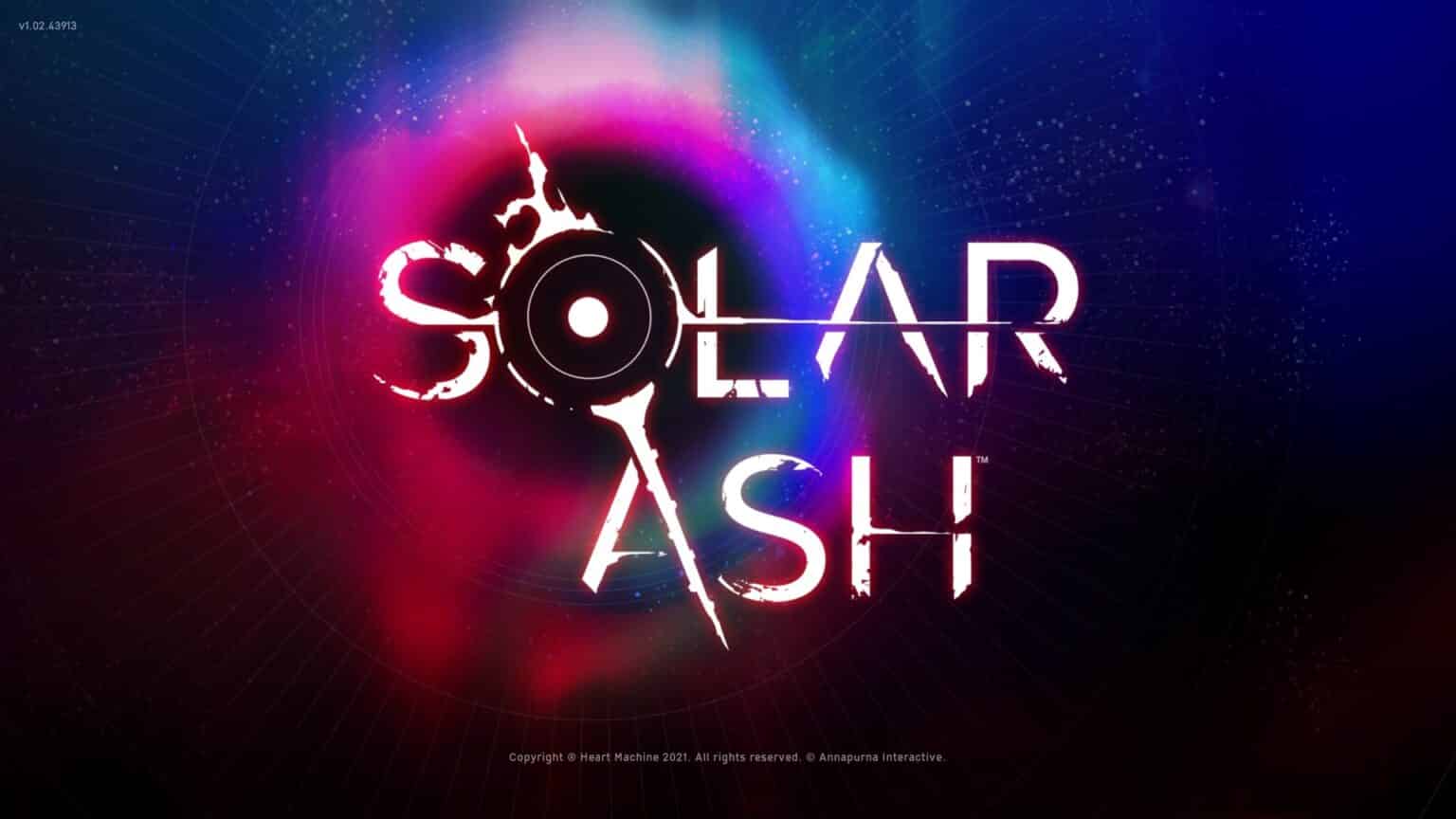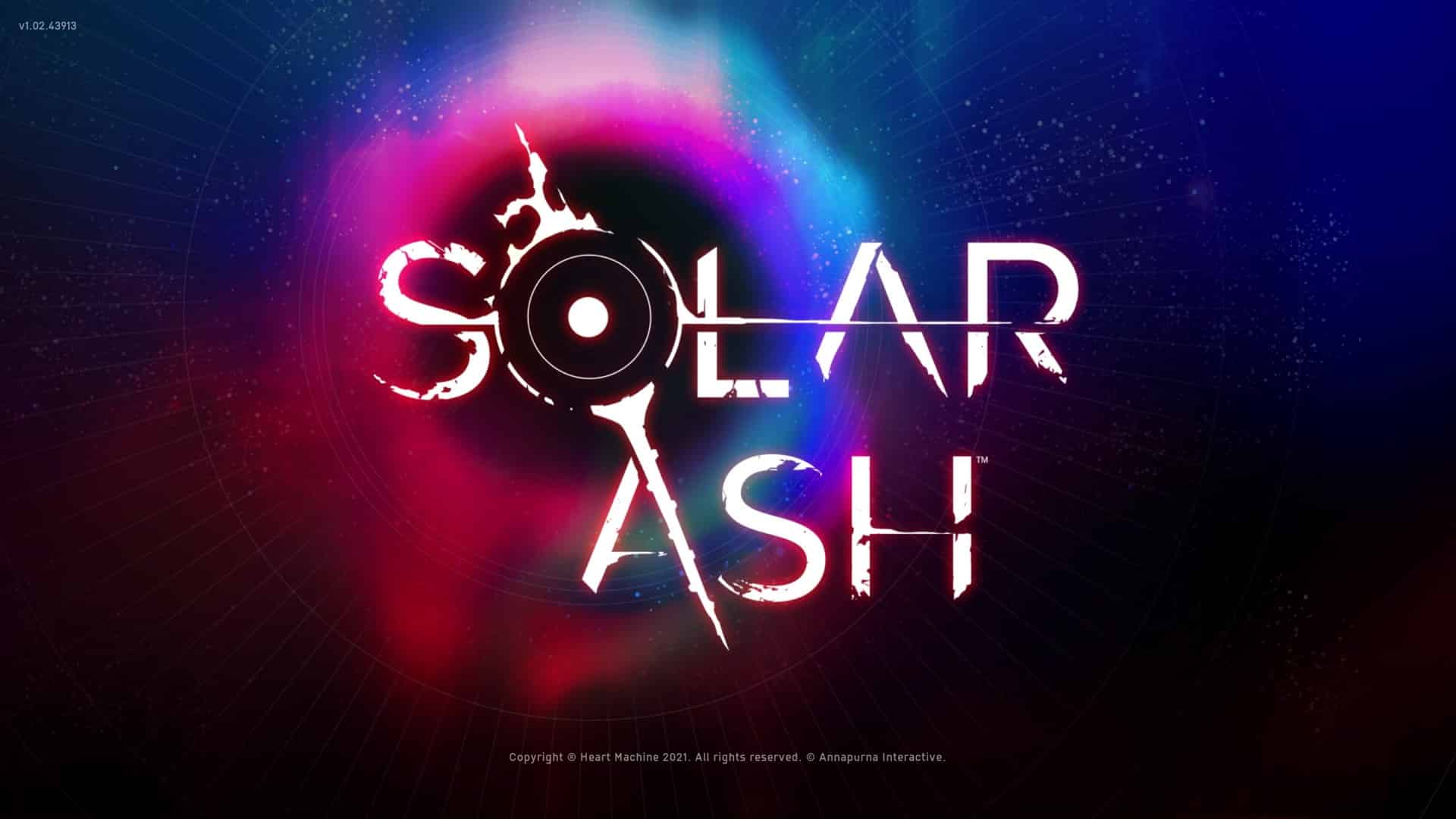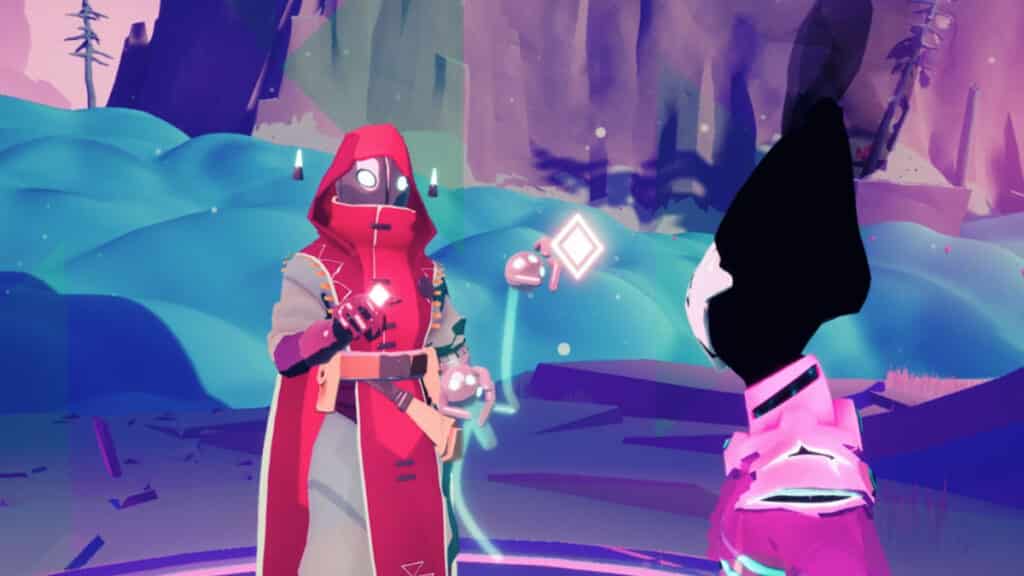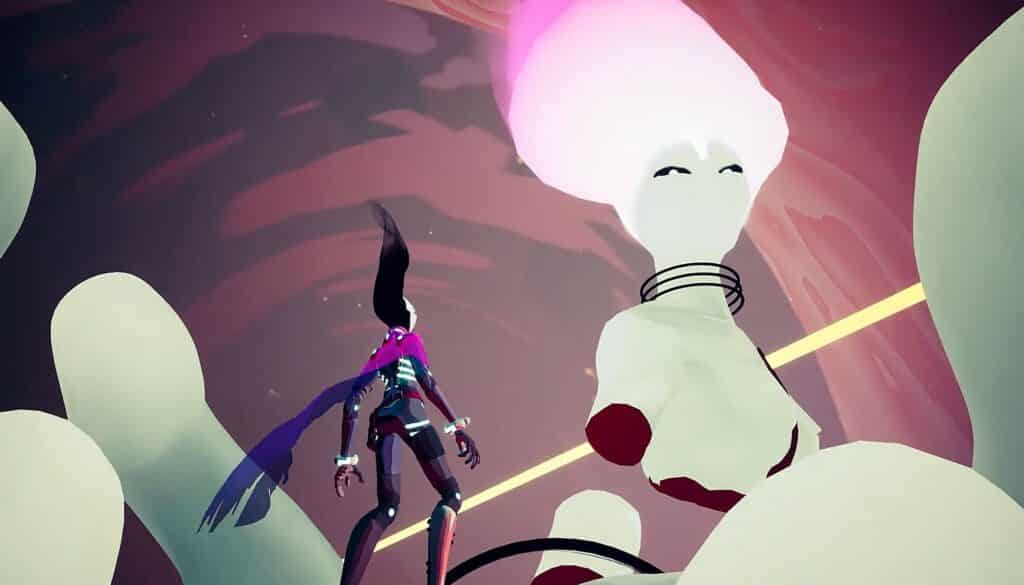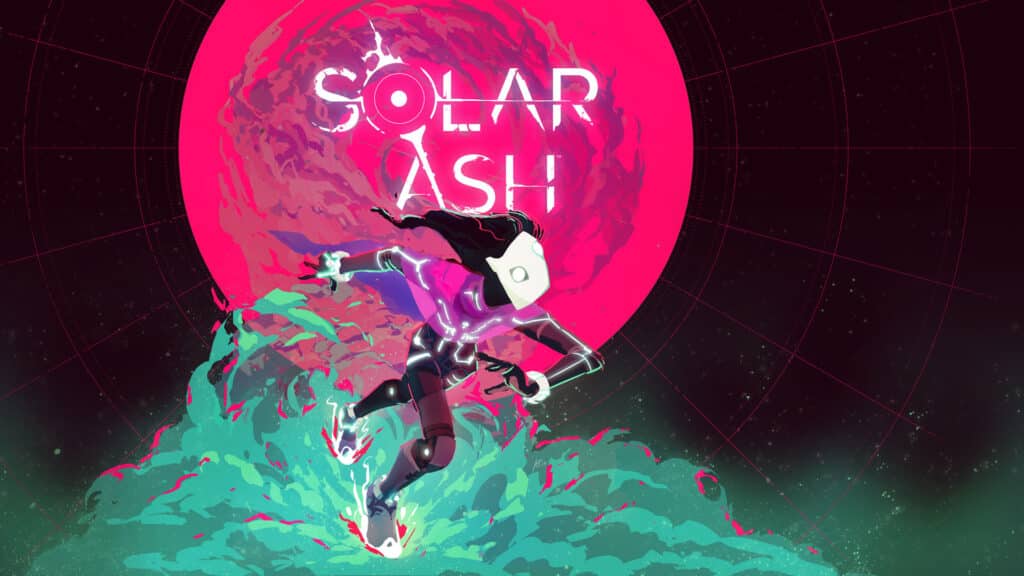Heart Machine is a development studio that clearly has a passion for games, making games from the games they love. Their first project, Hyper Light Drifter, was a critically acclaimed homage to the 16-bit era that oozed with influences from Zelda and Diablo.
With Solar Ash, Heart Machine wears some new, more contemporary influences on its sleeve, such as Mario 64, Shadow of the Colossus, and even Sunset Overdrive. Expanding into the 3D realm was always going to be a challenge; Solar Ash doesn’t manage to hit the same highs that its influences do. However, it is still a compelling game, both visually and mechanically, that is worth your time should you decide to get sucked into its mysterious universe.
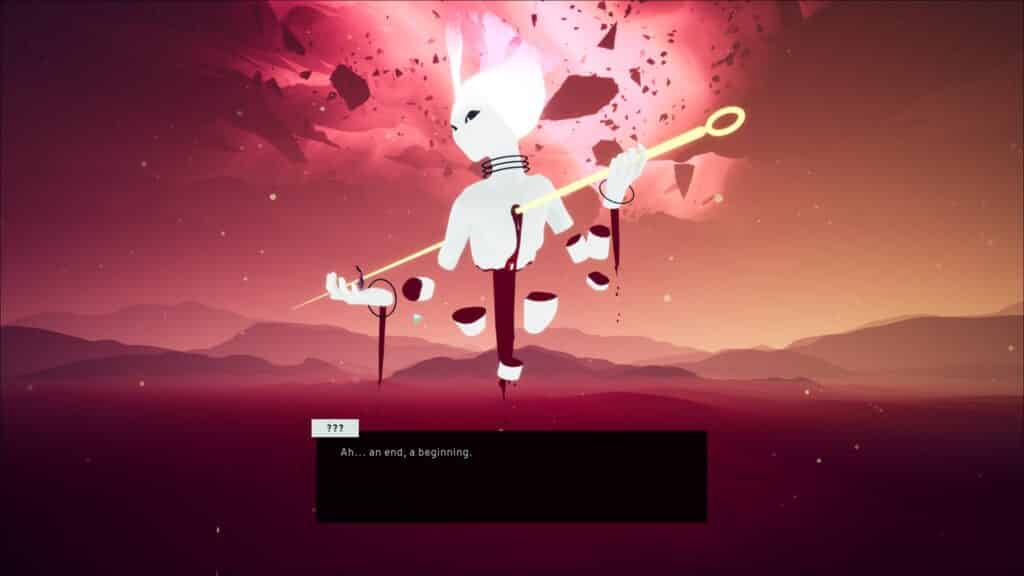
Solar Ash starts with our main protagonist, a Voidrunner named Rei, slipping through a black hole and awakening to her planet in a state of cataclysm. Her home planet has been overrun by some sort of void ooze, her Voidrunner team has seemingly scattered, and a monolithic structure named the Starseed is at the center of it all. Rei must explore the world to figure out what happened.
One of Hyper Light Drifter’s biggest criticisms was its muted and cryptic storytelling, making the game hard to follow. With Solar Ash, Heart Machine presents a much more upfront storytelling approach while still attempting to retain a cryptic nature to their created world, which occasionally did leave me puzzled and grasping for understanding in this world.
If you’re not careful, story concepts like the Ultravoid can go right over your head. Throughout the first act, I felt as if I had jumped into Solar Ash after missing the whole first quarter of the story, and it never does much to explain its world from there. You will be introduced to side characters with their own mini-side quests that flesh out and explain everything a little better, but to get a much better grasp on the world, you will have to parse through many of the collectible Void logs.
Going solely through the main story is confusing at times, and I struggled to find much meaning in what I was doing from it. Ultimately, Solar Ash does tie everything together in the end with a satisfactory conclusion. Still, you really have to stick through a lot of dialogue that, for a while, feels meaningless to get to the big ending.
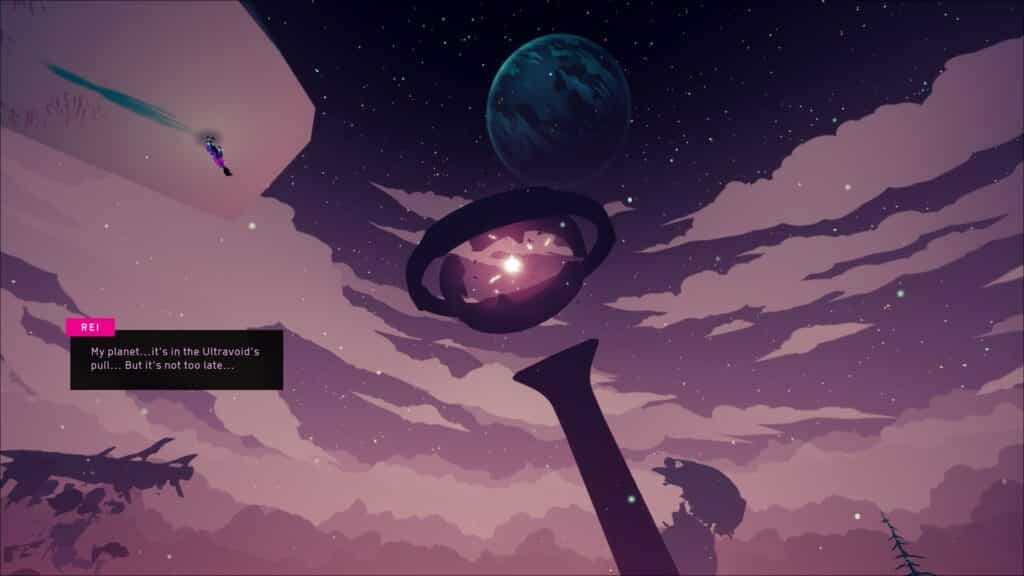
What kept me going was the visual treat that is Solar Ash. Solar Ash features a strong art style of hard-edged geometry juxtaposed with bubbly clouds, making up Rei’s planet’s design. However, the planet would be nothing without the fantastic colorwork on display. Heart Machine knows how to use color and use it effectively. Like Hyper Light Drifter, Solar Ash utilizes a pink and blue color scheme throughout its character design, worlds, cutscenes, and transitions.
Aesthetically, everything about Solar Ash pops right out of the TV. It’s a game begging to be played on an HDR panel, and when coupled with its fluid gameplay, Solar Ash is a treat to look at.
Solar Ash finds itself somewhere between Shadow of the Colossus and Sunset Overdrive, with its spectacle boss fights and rail grinding movement mechanics, while never reaching the peaks of either of those games. That’s not to say that Solar Ash isn’t a fun game because it is. What Solar Ash does best is create a fluid, fast traversal system that hits the right notes to create a flow-state gameplay experience. Skating is mechanically smooth, responsive, and polished to a shine.
Still, you won’t find yourself pulling off fancy maneuvers across your controller in the same way you would a 3D Mario or constantly discovering skate lines like in Sunset Overdrive. Solar Ash is a much more straightforward experience that nails the sense of momentum that these games require. Hitting a line perfectly and tons of gaining speed is always satisfying and highly entertaining but always confined to what the level wants you to do.
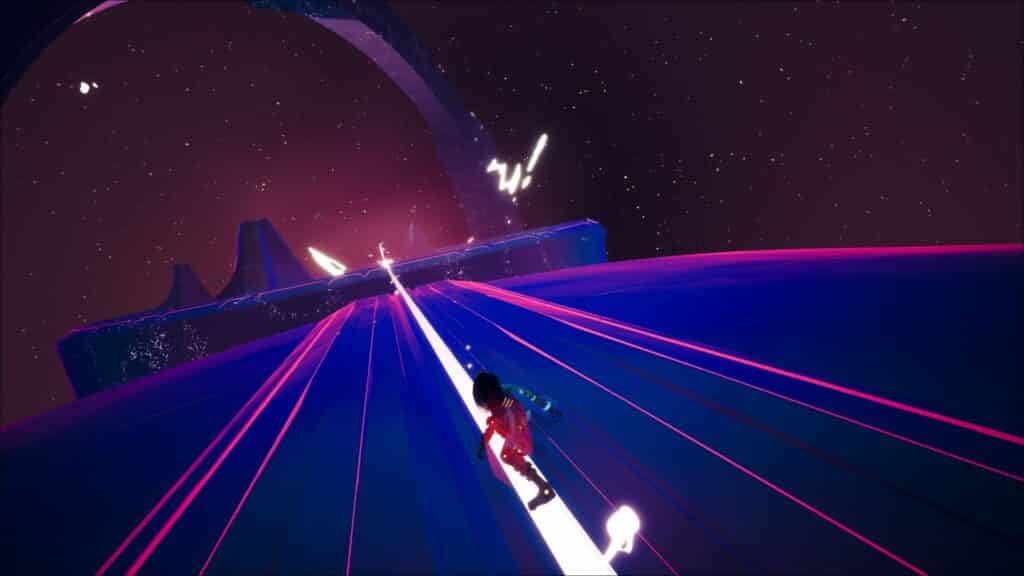
Checkpoints liter the world, making the game forgiving when you fail. There are always shields next to checkpoints, meaning that the devs know you will fail and want you to keep trying until you perfect your run. This isn’t the most challenging game ever.
Unlike Heart Machine’s previous Hyper Light Drifter, Solar Ash focuses far less on the combat experience. Most enemies die in two to three hits, acting more like speed bumps in your skating lines than actual foes. Often you can actually just skip enemies altogether if you’re quick enough to dodge their attacks. In motion, it is fascinating to see Rei dash through a level, defeating enemies without skipping a beat like she is collecting style points on the way to defeat the boss.
Solar Ash focuses far more on exploration and being a movement-focused platformer. Every level, at its core, is a series of timed traversal puzzles in which you must find a way to defeat the void ooze that is taking over that specific level, eventually leading to a Shadow of the Colossus-style boss fight.
Solar Ash’s exploration areas gradually become more complex and large as you learn to explore its worlds. While I appreciate its constant expansion in scope, the core gameplay loop still winds up being extremely repetitive. Go here, complete the goop puzzles, fight the boss, do this six times, finish the game.
The level design and puzzle design go into overdrive to save Solar Ash from being a 6 to 8-hour snooze fest, but even then, it doesn’t do much to stop fatigue from settling in towards the end. The game ends when it’s supposed to, and I commend Heart Machine for being aware of the game’s limitations.
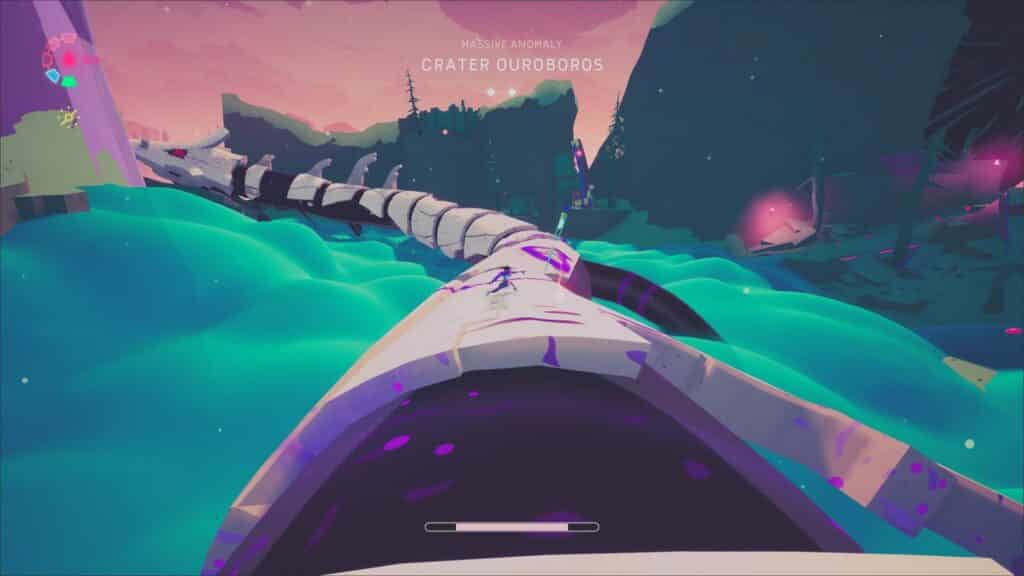
However, Solar Ash doesn’t do a great job at explaining a lot of the intricacies of each level and how you should interact with the unique features of each area. For example, it took me far longer than it should have to understand how to use the spores in one level than I feel that it really should have. There was frequently a lot of dead air at the start of each zone as I whacked anything that looked particularly interesting to see if it did anything to help me progress through the level.
I understand that hand-holding isn’t always the best option, especially in a mechanically simple game like Solar Ash. However, if you’re going to forego tutorials, then at least present new mechanics in an intuitive way to learn. Solar Ash does not do this.
Also, the camera work in this game is quite a mixed bag. Sometimes the camera is stellar, pulling back at just the right moment when you’re skating a line, presenting a breathtaking cinematic view. Other times, like during boss fights or enemy-dense sections, the camera is your worst enemy.
Boss fights, in particular, get very hectic, requiring precise movement and forward-thinking for skating lines on giant moving monsters. And this is where Solar Ash tries too hard to be a cinematic experience over a user-friendly one in its camera control.
I constantly fought between the intended cinematic camera angles or having a camera angle that would actually let me see where I needed to go next. When calculating how I will approach hitting the boss next, the last thing I need is the camera going into an off-angle or zooming out and losing the attack markers in the visual noise. Solar Ash needs to balance usability and cool factor if it expects me to take on very mechanically challenging situations, and it often decides that cool factor is what matters.
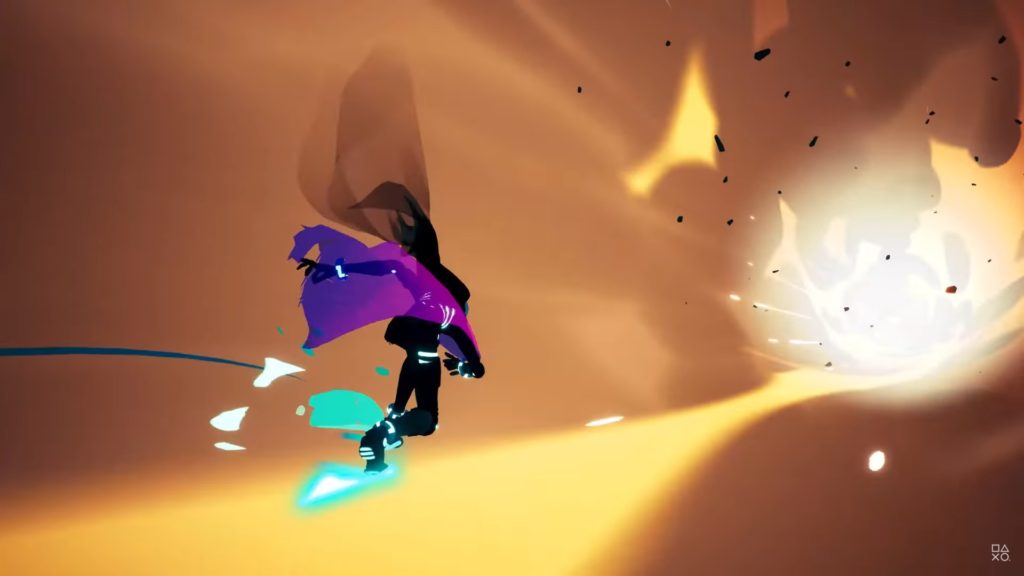
Despite these issues, I still had a great time with Solar Ash. It creates intimate moments with its small cast of characters and tells a unique story that is occasionally challenging to follow but has a lot of depth. Boss battles feel larger than life as they take place inside one of the most visually exciting worlds of the year.
Solar Ash is at its best when you can skate a line perfectly and enter that satisfying flow state where nothing can stop you. The only thing Solar Ash asks of you is to fall into its groove and fall in love with its style, and if you can do that, you will have a wonderful time.



